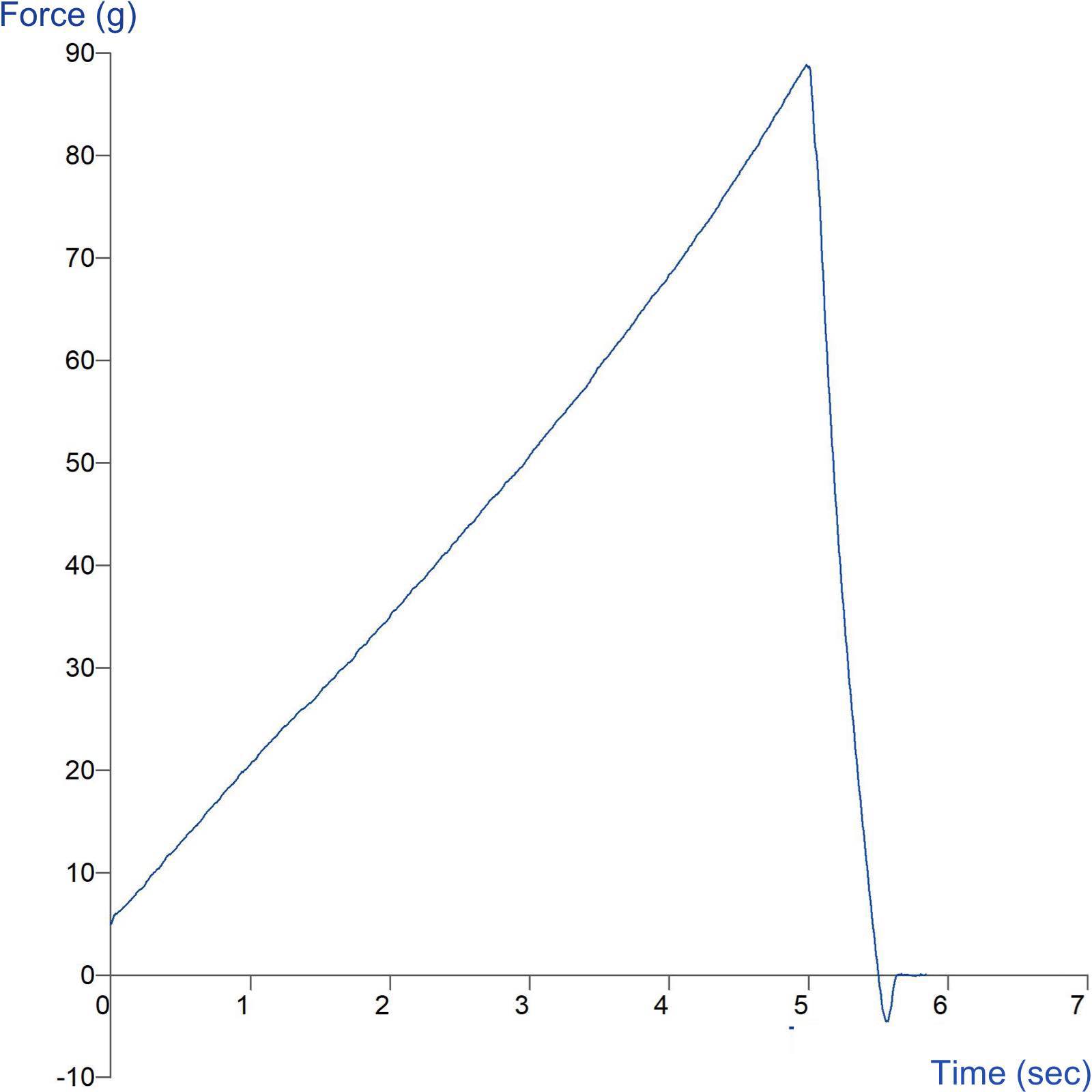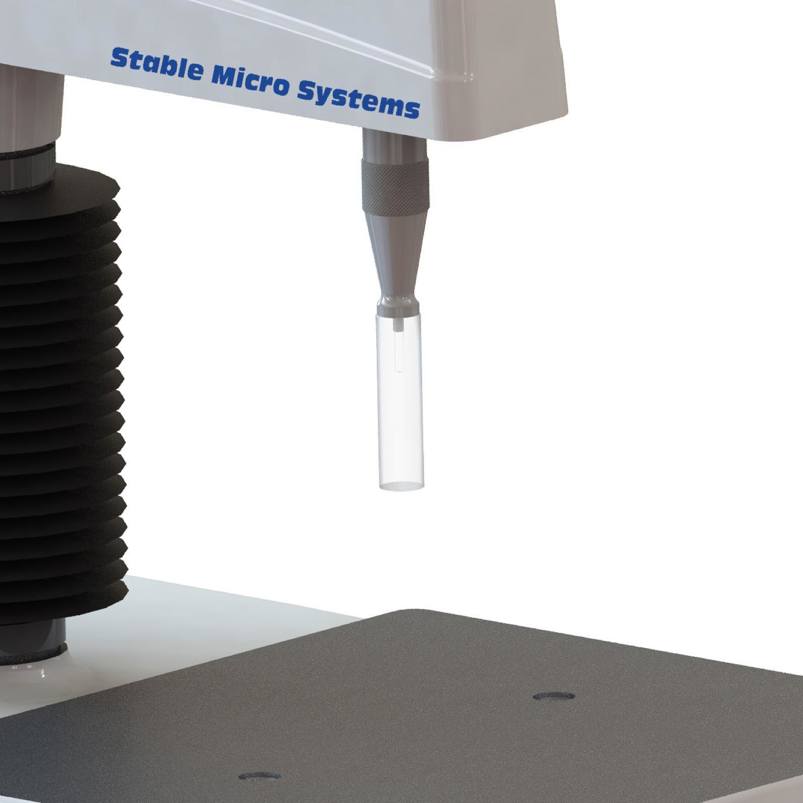Product overview
A family of flat-ended Cylinder Probes from 2mm to 50mm diameter are available.
The choice of Cylinder Probe is based on whether you wish to perform a puncture/penetration or compression test. For a compression test, the Cylinder Probe needs to be larger than the sample so that during testing the sample is completely contained within the surface are of the probe.
For penetration tests, the choice of small diameter probe will be based on the size of the sample, the force limitation of the Load Cell (a smaller surface area will reduce the measured force) and the lack of homogeneity in the sample. A level of detail might also be required from the sample testing (i.e. smaller Cylinder Probes (usually form 2-4mm diameter) are able to penetrate through layers within a material and show layer detail whereas larger cylinders are more like to compress the layers together during testing. During a puncture test both compressive and shear forces are measured and irrecoverable damage of the sample occurs.
Measurements using Cylinder Probes range from hardness, softness, toughness, stickiness, compactability, compressibility and many other properties.
Additional measurements using large cylinder probes range from visco-elastic creep, Young’s modulus, compliance and stress relaxation.
How does the 1/2" Perspex Cylinder Probe work?
Typical graph

Technical information
Ideal sample form
Self-supporting or contained solid/semi-solid materials.
Benefits and limitations
- Probes with larger diameters have a larger surface area for testing which subsequently requires a high force capacity for testing samples.
- Tests that completely contain a sample provide the ability to measure product springiness/recovery.
- If using this Cylinder Probe as a compression probe where the sample is completely contained under the probe, for comparison purposes the samples need to be of the same size and shape.
Installation
Full installation instructions are provided within the Education Zone of the latest Exponent/Connect software version and on the technical information sheet accompanying this product.
Chemical compatibility
Stable Micro Systems probes and attachments are commonly made from four materials: anodised aluminium (AA6082 T6), stainless steel (316 T), Delrin (acetyl copolymer) and Perspex (polycarbonate).
In general use, probes and attachments made from these materials will be suitable for testing food products and inert non-food materials.
The four materials listed above are not universally resistant to all types of chemicals and as such the compatibility of the probe/attachment material with the product (to be tested) must be established to prevent damage to the probes and attachments. If the compatibility of the product with the probe is unknown to the customer then the chemical information about the product (Material Safety Data Sheet or Product Data Sheet) should be submitted to Stable Micro Systems. Stable Micro Systems will then assess the suitability of the probe/attachment material for use with the product and advise accordingly. If this advice is not sought then Stable Micro Systems will not accept liability for probes/attachments damaged by chemical attack from the product being tested.
Cleaning and maintenance
All probes and attachments may be cleaned in warm (or hand hot) water using a mild detergent. A soft brush may be used but abrasive cleaning aids should be avoided. Stable Micro Systems products should not be microwaved or cleaned in a dishwasher.
Screw threads should be lightly lubricated after drying using a light lubricant, e.g. petroleum jelly, mineral oil. This will aid the fitting and unscrewing of the item. Each component of a probe or attachment should be wrapped separately when stored, to avoid scratching or chipping. This will safeguard against any unnecessary damage to the accessory.

